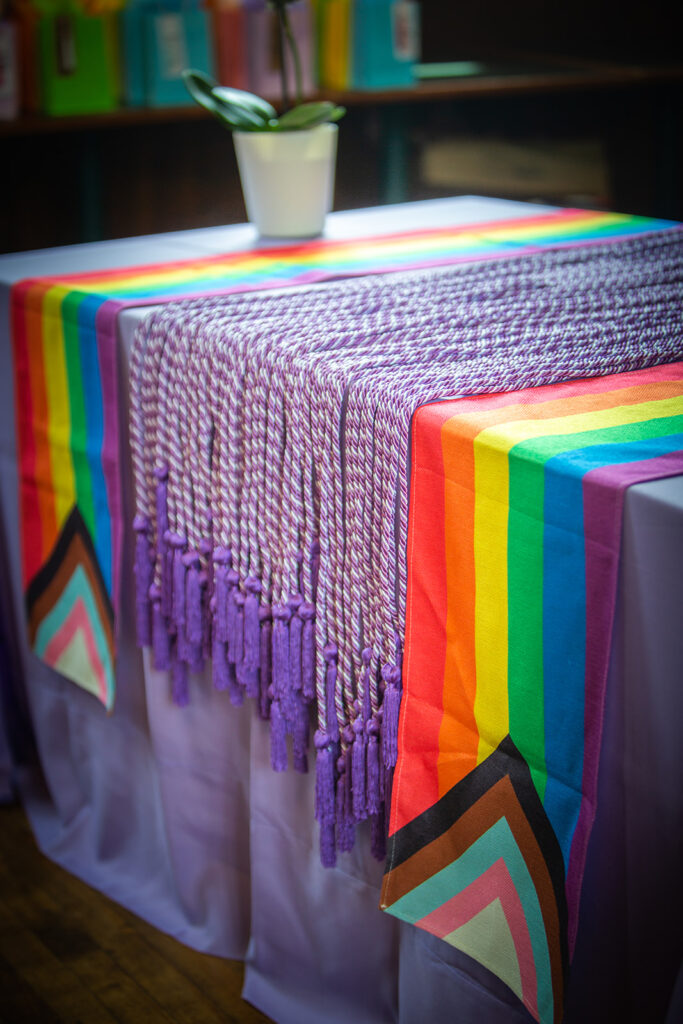The Lavender Student Celebration honors the achievements and contributions of undergraduate, graduate, and professional LGBTQIA+ students and allies who have gone above and beyond to create a more equitable campus for the LGBTQIA+ community.
Originating in 1995 at the University of Michigan and created by Dr. Ronni Sanlo, the first Lavender Graduation ceremony provided a benchmark for future innovations on these remarkable celebrations. Lavender student celebration, sometimes colloquially referred to as “LavGrad,” honors LGBTQIA+ students by bringing together members of their communities to celebrate the accomplishments of graduates, with particular honor and recognition for the ways in which sexuality and gender have influenced their paths toward graduation.

Lavender in LGBTQIA+ history
The color lavender is important to LGBTQIA+ history. It is a combination of the pink triangle that gay men were forced to wear in concentration camps and the black triangle designating lesbians as political prisoners in Nazi Germany. The LGBTQIA+ civil rights movement took these symbols of hatred and combined them to make symbols and color of pride and community.
Since LGBTQIA+ students cross all lines of race, nationality, ethnicity, gender, ability, and socioeconomics, this special celebration provides unique multiple opportunities to present a truly multicultural event while acknowledging a population of students that often succumb to the plight of invisibility on their campuses.